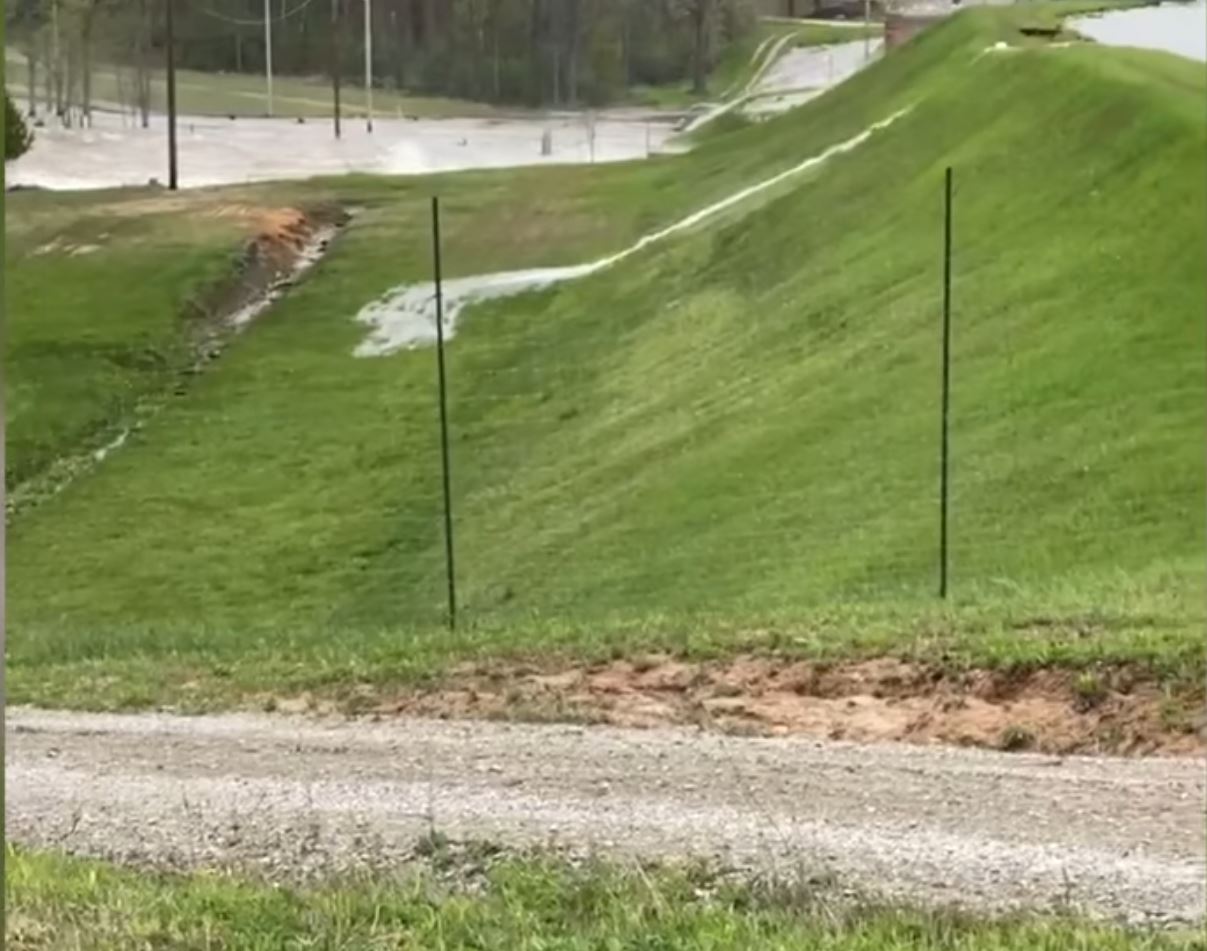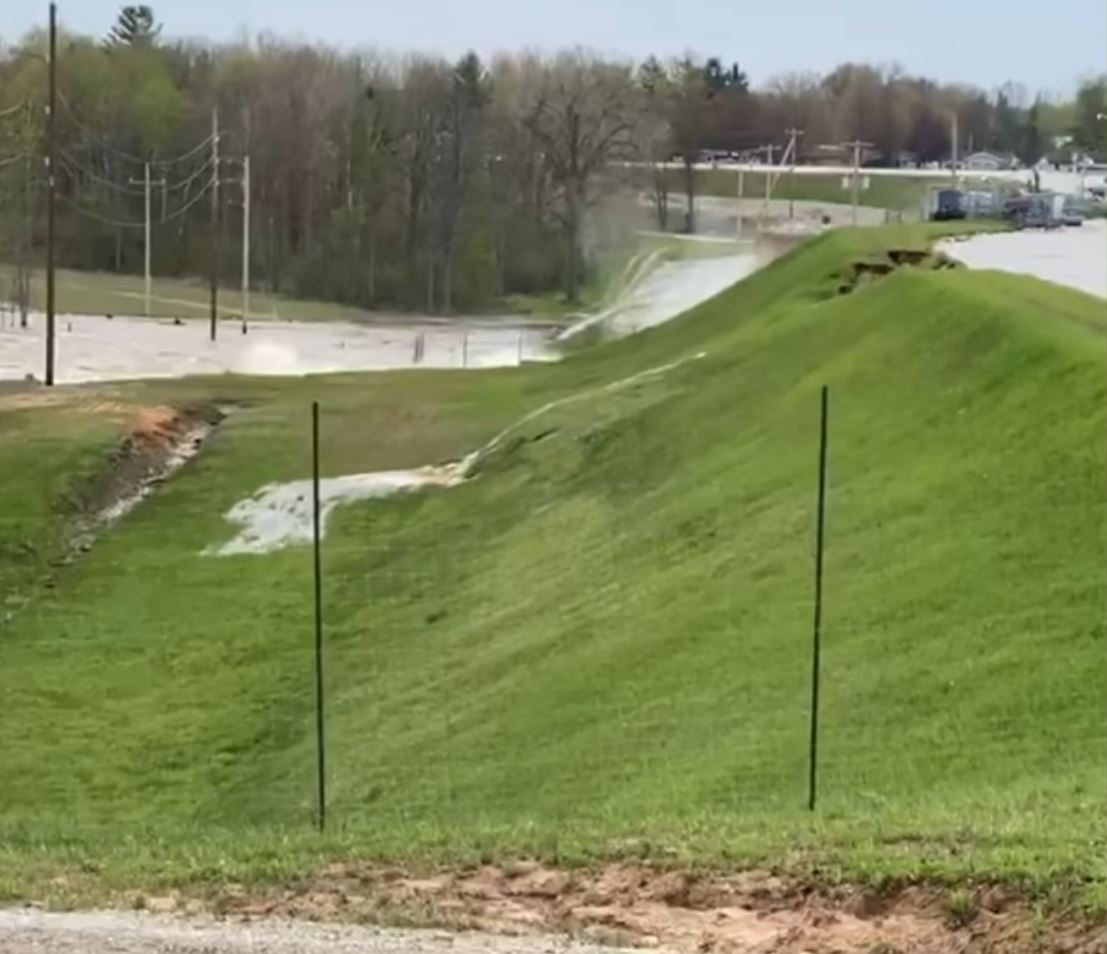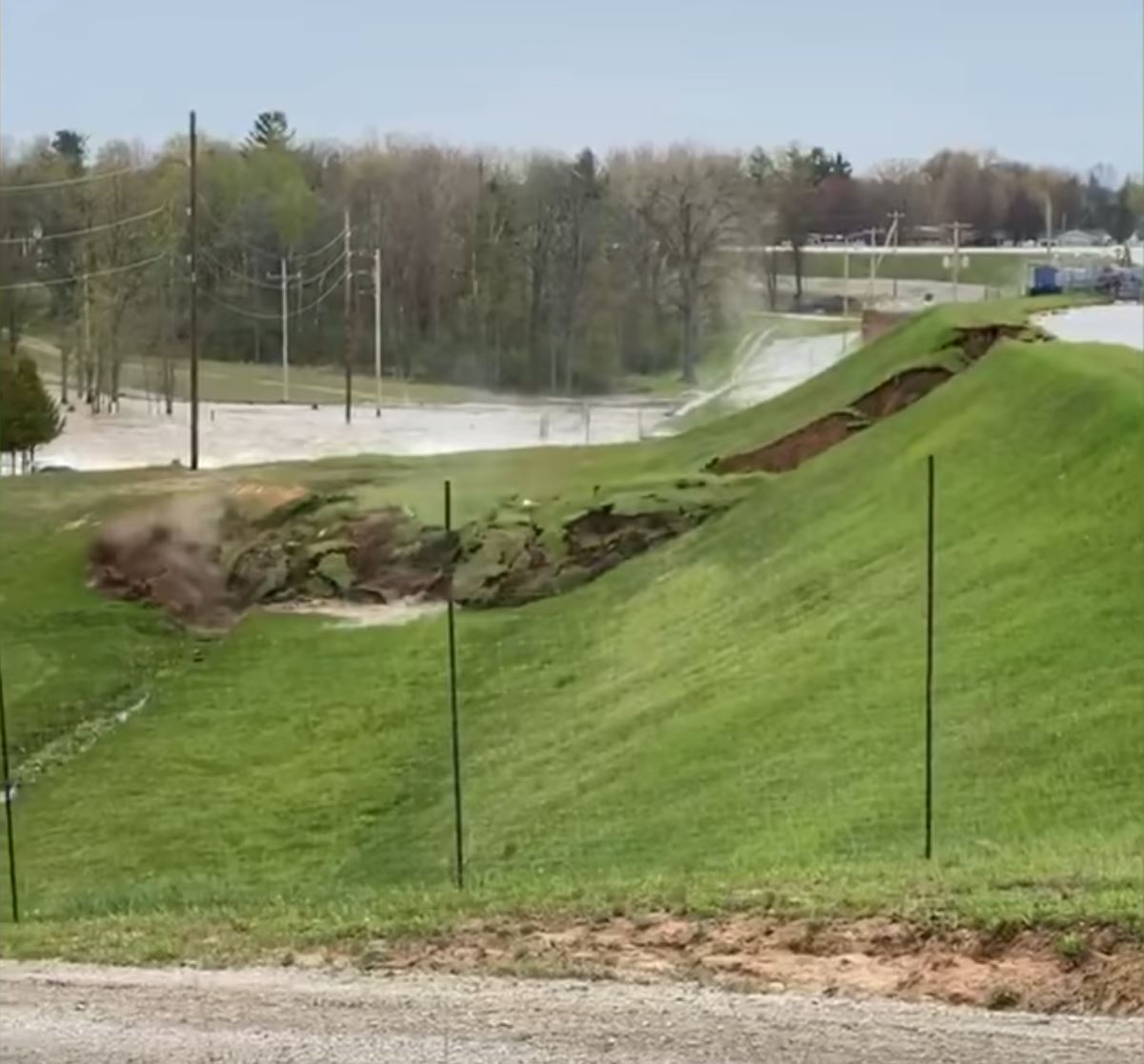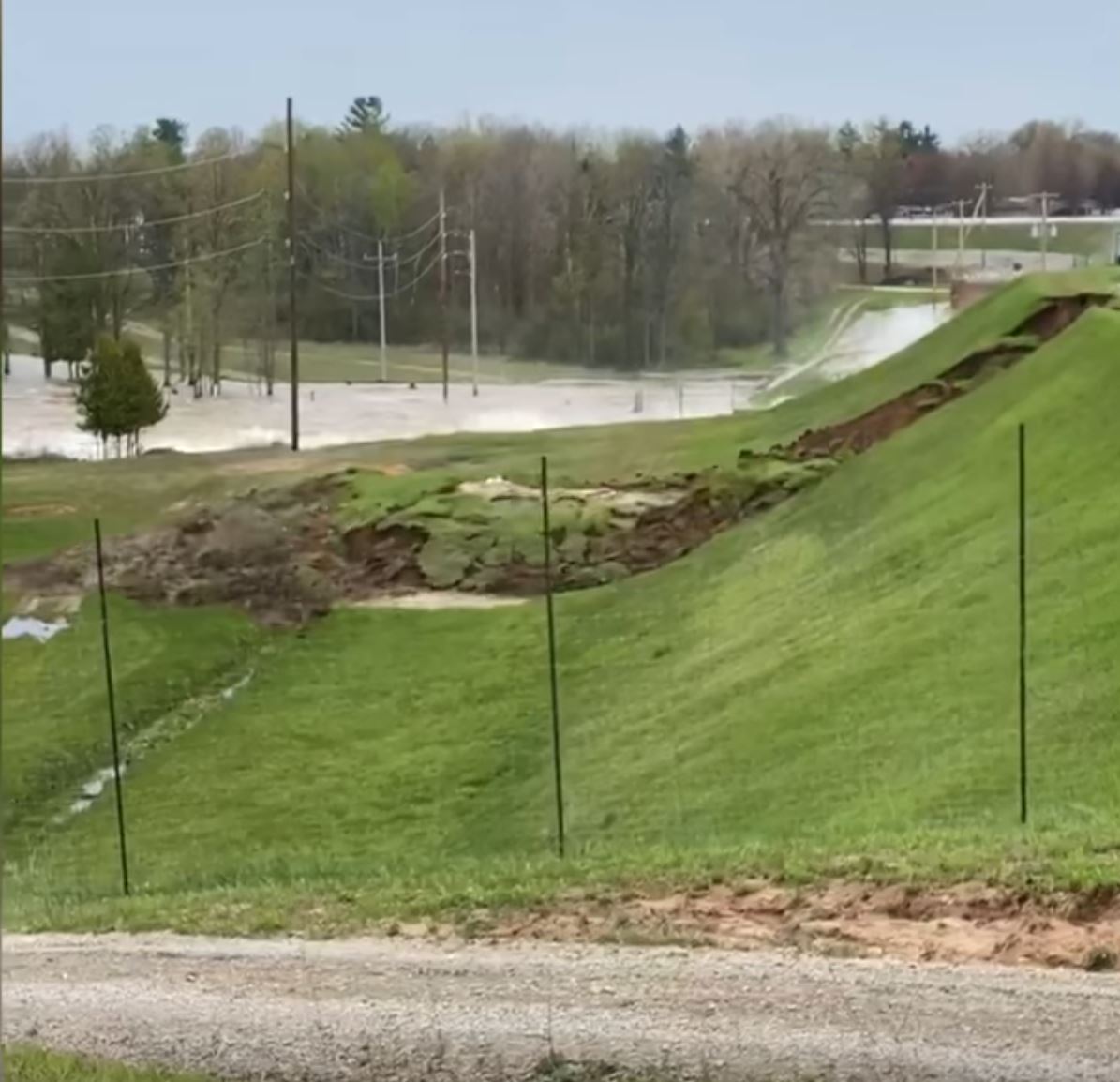21 May 2020
Edenville Dam failure: the astonishing video of the collapse sequence
Posted by Dave Petley
Edenville Dam failure: the astonishing video of the collapse sequence
Please also read my follow-up post to understand this event.
Yesterday I posted about the remarkable and devastating failure of the Edenville Dam in Michigan on Tuesday 19 May 2020. There are now heartbreaking images online showing the damage that the resulting flood has caused downstream. Given the known weakness of the dam, this is an unacceptable situation.
From a technical perspective, the most remarkable aspect of this failure is that the sequence of events that induced the breach is caught on video. I tweeted about this yesterday, but it turns out that the landslide that initiated the collapse was also captured, by Lynn Coleman, and posted to Youtube by MLive. This video is astonishing:-
.
As always we should crowdsource an interpretation of this sequence of events, but allow me to give an initial (and not definitive) interpretation. At the start of the video a small amount of water is seen to have overtopped the dam:-

A still from the video of the Edenville Dam failure, captured, by Lynn Coleman, and posted to Youtube by MLive.
.
It would be tempting to surmise that this was a simple overtopping, but I don’t think that is correct. I think the video shows that the crest of the dam has deformed and dipped, creating a depression through which water has started to flow. In other words, the video starts with the dam wall undergoing the early stages of failure, which in turn has allowed a small amount of overtopping.
The Edenville Dam failure then develops apace. The slope fails rapidly, initially forming a large toe bulge and there is major deformation at the crest:-

A still from the video of the Edenville Dam failure, captured, by Lynn Coleman, and posted to Youtube by MLive.
.
The failure is rapid and mobile – the still below is only two or so seconds later. Note the blurring of the toe of the landslide due to the rapidity of motion. there is also a hint of some dust or vapour in this area, and above the main body of the slide, which is interesting too:-

A still from the video of the Edenville Dam failure, captured, by Lynn Coleman, and posted to Youtube by MLive.
.
The landslide has clearly not failed through the full width of the dam as there is no sign of water pouring through. However, it is likely to have left only a very slender thickness of dam in place. I would hypothesise that this rapidly collapsed under the pressure of the reservoir water as a few seconds later water appears on the landslide deposit:-

A still from the video of the Edenville Dam failure, captured, by Lynn Coleman, and posted to Youtube by MLive.
.
The full breach rapidly develops after this.
This video is going to be a classic in the teaching of geotechnical failures, but it also clarifies the events that led to the Edenville Dam failure. It would have been simple to ascribe this to a simple overtopping event that occurred when the capacity of the spillway was exceeded. But in reality the events are are more worrying than that – the dam appears to have undergone a slope failure; a failure of its integrity. This should never occur, and to me it suggests that the problems at the Edenville Dam went further than known issues with the spillway.
Comments and thoughts welcome please. Please also read my follow-up post to understand this event.
.
On reflection 1: Cyclone Amphan
Cyclone Amphan made landfall on Wednesday and is now bringing heavy rainfall to NE India and Bangladesh. There are some early indications of landslides; we await to see the full impact, probably tomorrow or on Saturday.
.
On reflection 2: landslide damage to a chairlift in Alberta
A landslide on Tuesday 19 May 2020 damaged a chairlift at Nitehawk Adventure Park, a small ski field located in Grande Prairie, Alberta. From the images the damage is serious.


 Dave Petley is the Vice-Chancellor of the University of Hull in the United Kingdom. His blog provides commentary and analysis of landslide events occurring worldwide, including the landslides themselves, latest research, and conferences and meetings.
Dave Petley is the Vice-Chancellor of the University of Hull in the United Kingdom. His blog provides commentary and analysis of landslide events occurring worldwide, including the landslides themselves, latest research, and conferences and meetings.
Amateur speculation: In the first frames of the video, there is not a lot of water ponded below the dam, suggesting that the overspill started only a few minutes before this video starts. But I wonder if the water level rose above the top of the impermeable core (which, guessing, might be a few tens of centimetres below the crest?) some time before this, allowing significant amounts of water to seep over the core and into the material of the downslope face of the dam.
Both the subsidence at the top of the dam seen at the start of this video and the much larger (and deep-seated) slope failure would then be failure of this saturated permeable fill material.
I’m a local (also a geology prof at a local community college) and this is an incredible video. The dam had failed inspection and was known to be unsafe for years, apparently. You may already have seen reports to that effect, but here are a couple other recent reports with good background:
https://www.cnn.com/2020/05/20/politics/ferc-edenville-dam-midland-michigan-flooding/index.html
https://www.mlive.com/news/saginaw-bay-city/2020/05/troubled-dam-breaks-sends-floodwaters-hurtling-toward-midland.html
Comment/question from a non-professional. There seem to be jets of water originating from the middle of the toe of the landslide very close to the beginning (before the slide has even hit peak velocity). Does this indicate unusually high pore pressure in the downstream side of the dam? or perhaps piping?
Thank you for this amazing post and your terrific blog.
It looks there was a failure on the upstream face first, leading to supersaturation of the embankment fill and subsequent failure on the downstream face. It appears that water was expelled from the failing toe under significant pressure as evidenced by the jets and spray. The speed at which the abutment eroded makes me wonder if there was a clay core in this structure. A quick search: “Edenville dam age” says it was built around 1925. Geotechnical engineering was in its infancy.
PS: freeze at 0:32 – 0:33 for the water jets exiting the slide mass.
This is an important video as it shows how embankment dam failures can reach a critical stage when minor overtopping leads to saturation and slumping of the downstream embankment. If the slump is large enough the crest of the dam is lowered and rapid erosion of the embankment then follows. Dam crests can develop low points over time because of long term embankment settlement. Overtopping flow initiates at these low points.
What is interpreted as dust appears to be mist expelled by air and water trapped under the sliding mass. This pressurized air reduces the sliding resistance of of mobilized soil and allows it to travel a long distance.
Please note and revise your blog text; this is failure of the “fuse plug” in the dam, which is weak at the top and obviously armored further down to prevent total failure. @highlyanne on Twitter posted site drawings showing this, I’m happy to find and email them if you like.
[The drawing you have tweeted does not seem to show the correct configuration to me. It appears to be a different site. D.]
This type of failure is not due to overtopping, it is due to the dam becoming saturated. When fine particulate matter (like clay), is not ‘saturated’, then the water is held in place by capillary action, which depends on the curvature of the water surfaces in the pores. That generates ‘capillary suction’, the same ‘suction’ that pulls water up a wick.
When the particulate matter becomes ‘saturated’ (as in completely filled with water, so there are no pores filled with air), then there is no more ‘capillary suction’ and the fine material loses all cohesion. It is capillary suction that allows you to build a sand castle with damp sand, where you can’t build anything with completely dry sand, or with sand that is saturated.
In dams like this it is important to prevent water that is being impounded from getting into the dam and saturating it. It is critically important for the dam to be allowed to drain, so that the material inside the dam has both air and water present so it can develop cohesion by capillary suction. That is what periodic maintenance for these types of dams is supposed to do, ensure that the dam is impermeable on the upstream side, and can drain on the downstream side so it maintains stability by capillary suction.
A fascinating explanation Dave. Thank you. The sand castle example is exactly the sort of thing that helps amateurs like me to understand the science more quickly and easily. Much appreciated.
Look up shallow/deep rotational slumps
It appears from this report that the owners of the dam lowered the lake level last fall but were sued by the State for damaging the environment. https://www.mlive.com/news/2020/05/owner-of-failed-dam-state-fought-over-wixom-lake-levels-before-flood.html
Looking at the video and stills provided, I agree that this was a slope stability failure. The deformation in the crest may be caused by smaller failures that progressed into the larger failure shown in this video. The failure in the video does not extend all the way through the crest of the dam or extend to the toe. It is possible that so internal erosion is occurring, which caused the initial failure. Great video, wish it started earlier and got to see the crest up close but that wouldn’t be safe.
If you look at that area of the embankment on google earth, which is an image from a couple years ago, you can see that there were issues with the embankment in that area. There were depressions that looked like valleys, three of them, that joined at the toe. And you can see what looks like seepage emanating from that area of the toe. It appears that this was a failure waiting to happen and it only needed the extra loading from the additional head on the upstream side to cause the failure.
My husband was a Civil engineer and this is the very reason he said no one should ever live below a dam site. Especially old ones such as this.
Looks like a rotational earthslide per David Varnes USGS classification. High seepage pressure combined with minimal effective stress leads to formation of a rotational glide plane and away we go. Note that the toe bulge includes a cluster of discrete blocks which beak down during movement and subsequent dewatering. this indicates the mass movement began as a rotational slump with a glide plane, and transitioned into an earth flow with loss of cohesion.
I am very sorry for confusion I caused; I confused this with the downstream Sanford Dam, which indeed failed at a fuse plug. On another note, here’s a masterpiece of a reference on small dam engineering; an old BLM publication. https://www.usbr.gov/tsc/techreferences/mands/mands-pdfs/SmallDams.pdf
Looks like a rotational slide per David Varnes, USGS. High seepage pressure combined with low effective stress forms a glide plane and away we go. Note the discrete blocks on the toe; movement breaks down cohesive strength and dewatering transitions the movement to flow.
Some very interesting physical modeling of fuse plugs. https://energiforskmedia.blob.core.windows.net/media/23911/fuse-plug-breach-tests-energiforskrapport-2018-465.pdf
James and Dave, the idea of a sand castle is excellent. I would like to add that the word adhesion is better here than the word suction, as suction implies fluid flow, like air, then water up a drinking straw. There is no notable flow going on in a sand castle, or under a piece of adhesive tape. I’m a retired (for 9 years) science teacher, so I can’t regale any classes with your explanation, Dave. 30+ years and I missed this clear idea. So it goes.
There is an excellent article in Slate regarding these failures. At least one of the dams did no meet FERC guidelines/ rules, and FERC was aiming for decertifying these dams in 2022. There is evidence that maintenance has not been up to par.
I have a question. The news talks about the people wanting to sue the owners, but wasnt all the *issues in early tussles all about the structural or spillway points? In other words they could have had a perfect spillway and yet the apparent saturation cause of failure was unrelated? And nothing they could have done in the area of the aging spillway could have prevented this? Is that your opinion?
This sluffing off of the downstream face is similar to the way Kelly Barnes Dam reportedly failed in 1977.
Why is the trough at the toe (which I suppose is the toe drain outlet) dry before the failure? Was the toe drain clogged and nonfunctioning? This could have lead to rise of the phreatic line, eventual saturation of the slope, and the circular failure seen.
To add to what JAMES FALLS commented about pausing the video. When viewing a YouTube video on a Windows desktop/laptop, once you have paused the video, you can then use the keyboard comma “,” and period “.” keys to move back and forward one frame at a time, hold the key down to do it continuously – see: https://support.google.com/youtube/answer/7631406
This was a truly devestating situation for a lot of people in my home town. My property suffered damage but thankfully my family was safe and many other people were hurt worse. One small bit of relief came from a very kind local electrician. He was swamped with work but he did a great job replacing tons of electrical work in my house. He was courteous and charged me an extremely reasonable rate when I was in quite a desparate situation. For anyone still hurting in the area, I would highly recommend them. https://zazoelectric.com